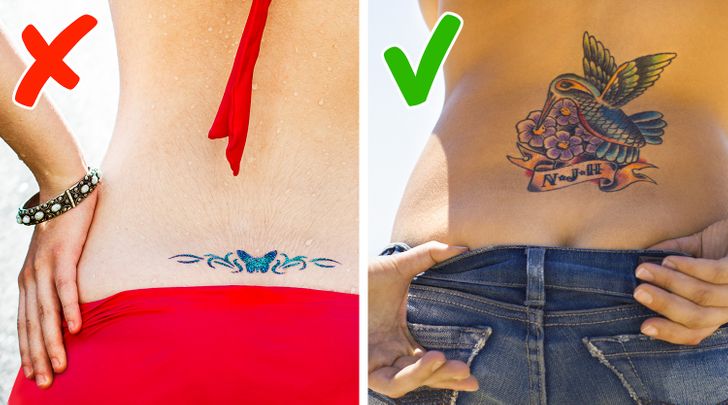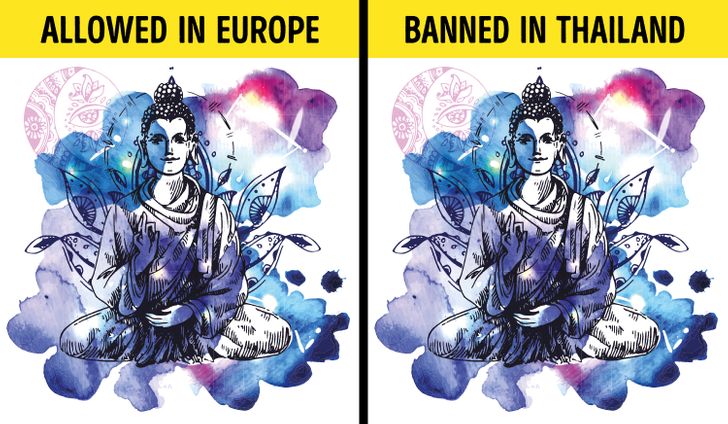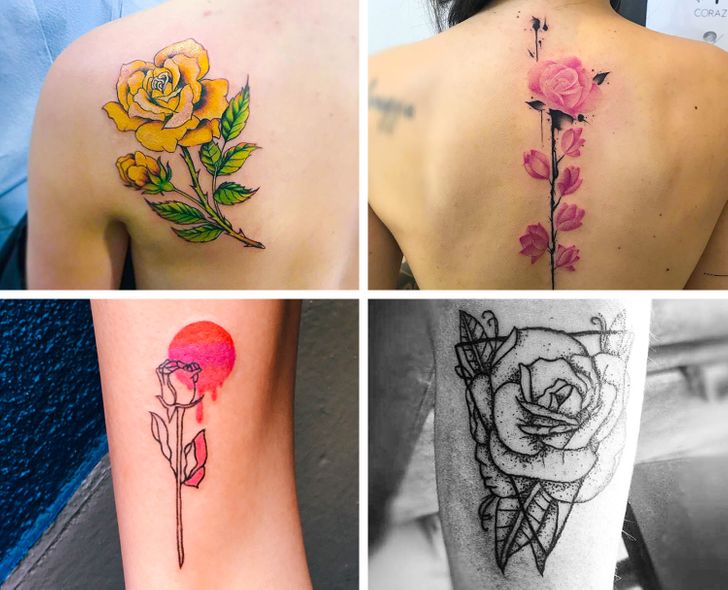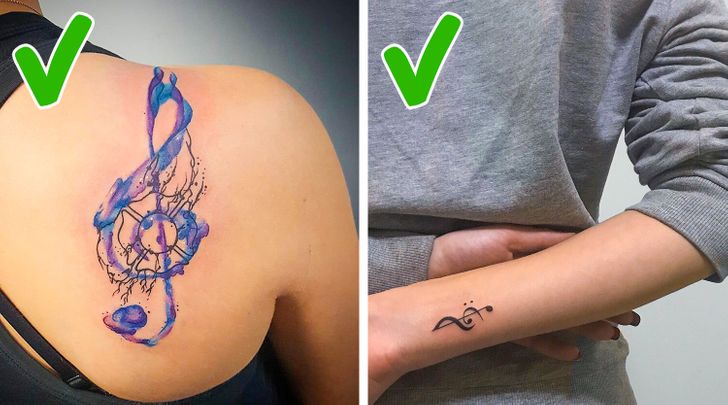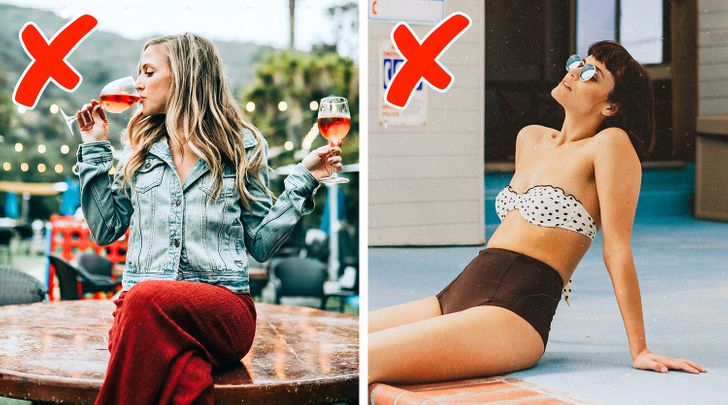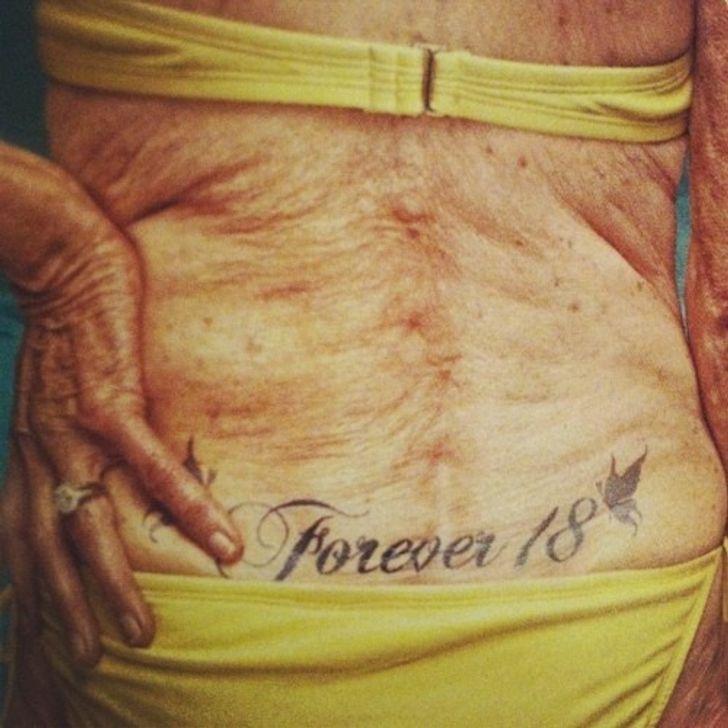Yes I do have 14 tattoos and I don't regret anyone of it
23 Crucial Tips on Getting a Tattoo to Avoid a Lifetime of Regret

In 2010, American researchers said that tattoos became identification signs for millennials. This new generation is also really interested in this kind of art. If you want to get a tattoo or cover a mistake from the past, these pieces of advice from tattoo artists will help you make the right decision.
Bright Side wants to share some tips with you on how to choose a tattoo, take care of it, and never regret your decision.
Choosing a sketch
- Don’t follow trends blindly.
If you’ve always wanted to get realistic flowers but you see that primitive sketches and lettering tattoos are popular now, don’t betray your dream. Fashion changes but it’s not that easy to get rid of a tattoo you don’t like anymore.
- Don’t choose stereotypical tattoos.
These consist of hieroglyphs, simple hearts and butterflies, and trivial “My life, my rules” tattoos. There’s a chance that the translation of your hieroglyph means something different than what you actually think and lots of people “wear” the same words with deep meaning. Make sure your future tattoo doesn’t have any cultural meaning you don’t know about.
- Don’t get a small tattoo to know whether you’re going to like it or not.
If you realize that tattoos aren’t for you, but you already have one, it’ll annoy you. If you do like it, believe us, thin lines will fade and the tattoo will change its shape and size. By the way, people don’t usually think before getting an “experimental” tattoo.
- Don’t get an already existing tattoo/sketch from the Internet.
You may get acquainted with pictures on Instagram and Google. But don’t copy already-existing sketches without changing them. If you can’t draw, you can create a beautiful and unique picture with the help of a tattoo artist.
- Don’t forget about cultural features.
If you find a nice pattern or an interesting mythological character, read about it from a credible source. Make sure the image doesn’t have any negative connotation that can offend a representative of another culture. If you want to get a text tattoo, make sure you understand the meaning of the quote or saying.
- Get acquainted with styles.
Even an ordinary rose can be depicted in different styles. For example, you can choose from a brightly detailed, tender watercolor, or geometric image.
- Spend some time with your idea.
Don’t hurry up the process of getting a tattoo. Ask yourself a few questions: Do I want to get a tattoo only because people around me get them? Will I like it in a few years? A poll conducted on a British website has shown that 1 in 6 people want to get rid of their tattoo. You can remove it today, but the process may last from 3 to 12 months and can cost more than the tattoo itself. What’s more, is laser tattoo removal is a rather painful procedure.
Size and place
- Make sure your future tattoo fits the part of your body you want to place it on.
It’s impossible to place a tattoo with lots of details on a wrist and a small image will look strange on one’s back or belly.
- Take a look at yourself in a full-length mirror.
Be absolutely sure of where on your body you want to get a tattoo. Make sure it’ll look good on you. For example, an anatomical heart would look weird on one’s neck. You should get a tattoo for yourself but if you have to follow a dress code at work, it’s recommended to choose a part of your body that can be hidden.
- Consider the most painful places and read about the types of anesthesia.
The degree of pain depends on your individual features and there are many kinds of anesthesia that can reduce pain. Don’t forget to ask your tattoo artist if they use it. The most painful parts of the body are knees, ankles, inner thighs, and fingers.
Choosing a tattoo artist
- Spend some time looking through artists’ works and visit a studio to get a consultation.
Don’t choose a studio just because it’s right next to your house. Go through their work on the Internet, ask your friends who have tattoos for advice, and make sure you like the style of the given artist. Consider all the artist’s tips when it comes to colors and sizing of an image. For example, your artist may let you know that tiny details usually require correction sessions.
- Make sure it’s safe.
Hygiene and safety are of the utmost importance. Don’t be afraid to ask your artist to show you around. Make sure the studio uses disposable needles and has sterilizing equipment for their tools. Don’t get a tattoo if you don’t trust your artist or if a studio is located in a strange place.
What you may and may not do before a tattoo session
- Don’t tan before an appointment.
- Don’t drink alcohol a few days before a session.
- Take a shower — it’s not recommended to soak a tattoo right after a session.
- Eat before a session since it can last rather long.
- Don’t shave the area you’re getting tattooed on your own as not to damage the skin.
What you may and may not do after a tattoo session
As a rule, it takes a tattoo 2-3 weeks to heal. Follow all recommendations that your artist gives you. These instructions may differ depending on used materials, the size of a tattoo, and the technique. The basic rules are:
- Gently wash the tattoo with clean water several times a day.
- Apply a thin layer of an unscented moisturizing cream that your artist recommends.
- Don’t tan, swim outside, go to saunas, or work out.
- Don’t scratch or itch your tattoo — slap it lightly instead.
- Don’t scratch the upper layer (especially when it scabs).
-
In approximately a month, your artist may invite you to come back to the studio for a correction session. If you damage your tattoo while healing, your artist has the right to refuse to correct your tattoo for free.
Here’s a bonus tip for those who worry about the way their tattoo is going to look when they get old:
Do you have any tattoos? How long did it take you to choose a sketch? Do you regret your tattoo or not?
Comments
Related Reads
I’m 100% Remote: I Refused My Boss’s New Rule to Work From the Office—HR Got Involved

I Refuse to Sacrifice My Retirement Dream for My Unemployed Son

I Refuse to Be Exploited as a Free Babysitter on My Hard-Earned Retirement Cruise

I Refuse to Split My Stepmom’s Inheritance With My Stepsiblings, I’m Not a Charity

10 Holiday Gatherings That Proved Family Drama Has No Days Off

10 Mothers-in-Law Who Know How to Stir the Pot

My Son Wants to Kick Me Out on the Street to Accommodate His New Family

10 True Stories That Prove Kindness Is Quiet — but Stands Strong

15+ Raw Stories About Jealousy That Can Leave You Speechless

13 Family Conflicts That Sound Straight Out of a Soap Opera

11 Stories Prove It Takes a Real Superpower to Handle Rude Customers

I Refuse to See My Stepfather Again After He Tried to Cancel My Mom’s Savings

